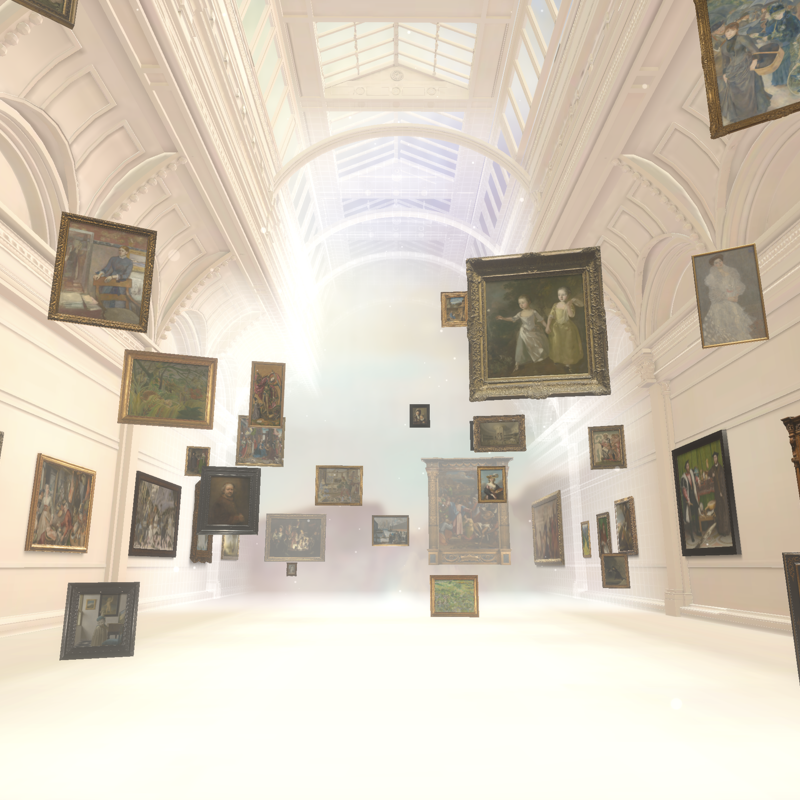Rachel Ruysch, 'Flowers in a Vase', about 1685
About the work
Overview
Rachel Ruysch’s elegant bouquet carries a breath of spring and summer. Peonies, hawthorn, honeysuckle and columbine all bloom early in the year, but the burnt orange and deep green of the lilies, the seed pod straggling over the edge of the shelf, the ripe wheat and the dry, veined leaves turn thoughts towards summer.
The light on the pale flowers sweeps upwards, making them luminous. Overhead, Ruysch’s delicate brushstrokes seem to skim over the surface of the picture, so that the dusky blue columbine seem as if they're drifting in the darkness. The plump green pistil at the centre of the peony appears to anchor the flower to prevent it floating away upwards.
Ruysch was one of the most successful flower painters of her time. Her father was keeper of Amsterdam’s botanical garden, a centre of the booming horticultural industry. She had first-hand knowledge of the things she painted, from specimen blooms and new floral imports to the tiny ants, the grasshopper and acrobatic caterpillars that accompany them.
Key facts
Details
- Full title
- Flowers in a Vase
- Artist
- Rachel Ruysch
- Artist dates
- 1664 - 1750
- Date made
- about 1685
- Medium and support
- oil on canvas
- Dimensions
- 57 × 43.5 cm
- Inscription summary
- Signed
- Acquisition credit
- Bequeathed by Alan Evans, 1974
- Inventory number
- NG6425
- Location
- Room 28
- Collection
- Main Collection
- Frame
- 17th-century Dutch Frame
Provenance
Additional information
This painting is included in a list of works with incomplete provenance from 1933–1945; for more information see Whereabouts of paintings 1933–1945.
Text extracted from the ‘Provenance’ section of the catalogue entry in Neil MacLaren, revised and expanded by Christopher Brown, ‘National Gallery Catalogues: The Dutch School: 1600–1900’, London 1991; for further information, see the full catalogue entry.
Exhibition history
-
2014Making ColourThe National Gallery (London)18 June 2014 - 7 September 2014
-
2016Dutch FlowersThe National Gallery (London)6 April 2016 - 29 August 2016
-
2022Dutch Flowers (National Touring Exhibition)Compton Verney29 October 2022 - 15 January 2023Sheffield Galleries and Museums Trust22 June 2023 - 17 September 2023The Box7 October 2023 - 7 January 2024
Bibliography
-
1989F. Woolf, Picture This: A First Introduction to Paintings, London 1989
-
1991Maclaren, Neil, revised by Christopher Brown, National Gallery Catalogues: The Dutch School, 1600-1900, 2nd edn (revised and expanded), 2 vols, London 1991
-
1995M. Batey and J. Woudstra, The Story of the Privy Garden at Hampton Court, London 1995
-
1995P. Taylor, Dutch Flower Painting, 1600-1720, New Haven 1995
-
1997C. Donzel, Le livre des fleurs, Paris 1997
-
2001
C. Baker and T. Henry, The National Gallery: Complete Illustrated Catalogue, London 2001
About this record
If you know more about this work or have spotted an error, please contact us. Please note that exhibition histories are listed from 2009 onwards. Bibliographies may not be complete; more comprehensive information is available in the National Gallery Library.




